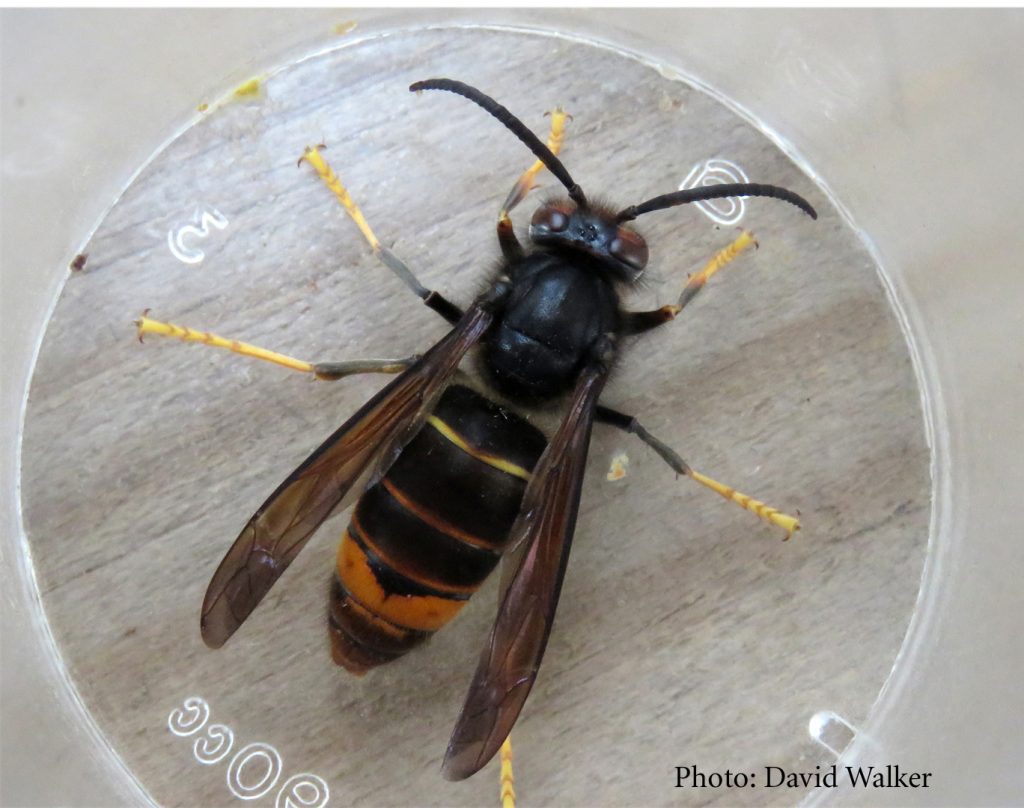
What is it?
According to NonNative Species.org:
An invasive non-native hornet originally from Asia. The Asian hornet is a highly aggressive predator of native insects and poses a significant threat to honey bees and other pollinators. In 2004 it was accidentally introduced to France where it has spread rapidly and into neighbouring countries. Since 2016 a number of sightings have been recorded in the UK.
A friend in France lost a hive to these Hornets within the space of half a day.
They hover around the entrance to a hive and wait for incoming bees which they attack and take away to feed their young.
This action called hawking results in the bees becoming trapped within the hive and unable to forage resulting in the colony weakening.
Eventually, the colony will use their food reserves and starve to death. Any honey left in the hive will be robbed by hornets, wasps or robber bees.
In France, this has become a serious threat to the honeybee. As a consequence, there are plans in place now to control its spread.
The Channel Islands have reported a number of sightings and subsequent nests. Southern England has had sightings and nests have been destroyed.
The National Plant Health Agency has issued cards for distribution to the public to aid identifying the pest.
Sightings of the yellow-legged hornet must be reported to http://www.nonnativespecies.org/home/index.cfm there is an app to download called Asian Hornet Watch.
Further information is also available from http://www.nationalbeeunit.com/index.cfm?sectionid=117
Everyone must become aware of this predator as it threatens not only honeybees but other insects and pollinators. At present, the effect of this insect is not fully known but in France, it is now a cause for concern.

2 comments
Comments are closed.